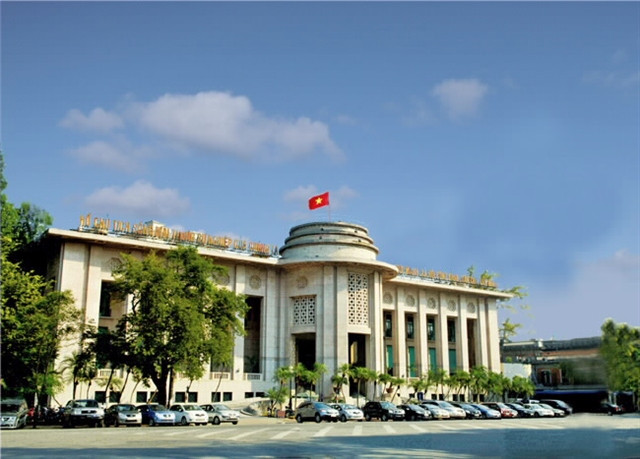 The SBV successfully bid for lending more than 5.09 trillion VNA on the OMO channel. (Photo: sbv.gov.vn)
The SBV successfully bid for lending more than 5.09 trillion VNA on the OMO channel. (Photo: sbv.gov.vn)Accordingly, during the SBV’s bid for lending more than 5.09 trillionVND on the OMO channel (the SBV’s lending channel through mortgaging valuablepapers), a commercial bank borrowed all the above amount from the SBV with aterm of seven days and an interest rate of 4% per year.
This was the first time since the beginning of 2024 that thebanking system needed such a large amount of money from the SBV. In January2023, winning bids on the OMO channel were worth only 1-2 billion VND.
The move was quite unexpected in the context that the peak paymentperiod near the Lunar New Year has passed.
In the interbank market, interest rates have also increased againafter two sessions of deep decline. The latest data released by the SBV showedthe average overnight interbank interest rate for dong-denominated loans on February 19 this yearincreased to 1.41% from 1.04% at the end of last week. Along with the overnightterm, interest rates at two other key terms also increased quite sharply, ofwhich one-week term increased from 1.27% to 1.6% and two-week term increasedfrom 1.39% to 1.6%.
The increase of interbank interest rates along with hightransaction turnover showed that the demand for loans among commercial bankshas remained large although the peak payment period near Lunar New Year haspassed.
Previously, interbank interest rates continuously escalated in thedays near Lunar New Year, of which overnight terms skyrocketed from 0.12% peryear on January 29, 2024 to 2.38% on February 6 and 7, 2024, equivalent toa surge of nearly 20 times within just a week.
According to experts, interbank interest rates increased sharplyat short terms mainly due to seasonality when payment demand increased near theLunar New Year.
To support commercial banks with liquidity demands, the SBV alwaysmaintained bids in the OMO channel, and adjusted up the bidding term to 14 daysin the period approaching the Lunar New Year holiday. However, during theperiod before the Lunar New Year, no banks needed the SBV's capital source./.




























